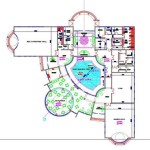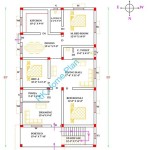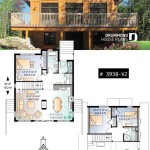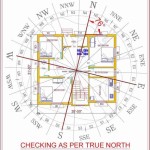Postmodern Architecture House Plans: A Guide to Design Principles and Key Features
Postmodern architecture, emerging as a reaction against the austerity and formality of modernism, offers a playful and eclectic approach to design. In the context of house plans, postmodernism translates into dwellings that prioritize individuality, complexity, and a rejection of strict functional determinism. This article explores the key characteristics of postmodern architectural styles as they apply to home design, discussing the underlying principles and providing insights into designing or recognizing postmodern house plans.
The postmodern movement, which gained traction in the late 20th century, challenged the perceived dogmas of modernism. Where modernism emphasized clean lines, minimalism, and a strict adherence to functionality, postmodernism embraced ornamentation, historical allusions, and a more subjective interpretation of architectural principles. This shift allowed for greater freedom of expression and a more humanistic approach to building design.
Postmodern house plans, therefore, often feature unexpected juxtapositions of forms and materials, a deliberate use of historical styles (sometimes in ironic or abstracted ways), and a general sense of visual complexity that distinguishes them from their modernist predecessors. The movement is interested in challenging expectations and creating visually stimulating environments.
Key Point 1: Deconstruction and Reinterpretation of Historical Styles
One of the most defining characteristics of postmodern architecture is its willingness to borrow from and reinterpret historical styles. Instead of replicating historical features verbatim, postmodern architects often abstract or fragment them, using pieces of classical or Victorian architecture in unexpected and sometimes contradictory ways. This approach aims to create a sense of historical awareness without being bound by strict historical accuracy.
For example, a postmodern house plan might incorporate a Palladian window (a classical arched window flanked by rectangular windows) but surround it with brightly colored panels or juxtapose it against a starkly modern facade. Similarly, Victorian-era details such as ornate cornices or decorative moldings might be used sparingly and in unconventional contexts, such as integrated into a minimalist interior space. This deliberate misplacement and reinterpretation of historical elements are what give postmodern architecture its distinct visual character.
The use of these historical cues is not always about mimicking the past. It's more about engaging in a dialogue with it, acknowledging the history of architecture while simultaneously subverting its traditional rules. The goal is to create a sense of familiarity and unexpectedness, prompting viewers to question the conventions of architectural design.
This focus on historical allusion also manifests in the use of specific architectural patterns and motifs. For instance, stylized columns, often non-structural and purely decorative, may be incorporated into the design. These columns might be made from unconventional materials or feature exaggerated proportions, further emphasizing the postmodern tendency to play with and distort traditional architectural forms.
Ultimately, the reinterpretation of historical styles in postmodern house plans serves to enrich the visual vocabulary of the building and to create a layered and complex design. It invites viewers to see familiar elements in new and unexpected ways, challenging their preconceived notions about architecture and design.
Key Point 2: Playful Use of Color and Materials
Beyond the appropriation of historical forms, postmodern architecture is also characterized by a playful and often unconventional use of color and materials. This approach stands in stark contrast to the modernist preference for neutral palettes and standardized materials. Postmodern architects tend to embrace bold colors, unexpected material combinations, and a general sense of visual exuberance.
Bright, saturated colors are frequently used in postmodern house plans, both on the exterior and interior. These colors might be used to highlight specific architectural features, to create visual contrast, or simply to add a sense of whimsy and personality to the design. Color is often used in a non-functional manner, employed more for aesthetic effect than for any practical purpose.
Material choices in postmodern architecture often defy traditional expectations. Unexpected combinations of materials, such as brick and metal, or stone and glass, are common. Synthetic materials, such as plastics and laminates, are also frequently used, often in conjunction with more traditional materials like wood and stone. This mixing of materials creates a sense of visual texture and complexity, further contributing to the overall postmodern aesthetic.
Texture also plays a critical role in postmodern designs. Rough textures might be juxtaposed against smooth surfaces, creating visual interest and tactile appeal. Patterns are also widely incorporated, both in the form of repeated motifs and in the arrangement of building materials. These patterns might be geometric or organic, abstract or representational, depending on the overall design concept.
The use of unusual, often unexpected, lighting is another key component. Spotlights, neon lights, and other dramatic forms of illumination are employed to emphasize certain features and create dramatic effects. The goal is to transform the building into a visually engaging and stimulating experience.
This freedom to experiment with color and materials is a hallmark of the postmodern approach. It reflects a desire to break free from the constraints of modernist orthodoxy and to create buildings that are both visually arresting and expressive of individual personality.
Key Point 3: Emphasis on Ornamentation and Visual Complexity
Contrary to the modernist principle of "less is more," postmodern architecture embraces ornamentation and visual complexity. Where modernism sought to strip away unnecessary decoration, postmodernism celebrates it, using ornamentation to add visual interest and expressiveness to buildings. This emphasis on ornamentation is not about mere decoration, but rather about using decorative elements to communicate ideas and create a richer architectural experience.
Ornamentation in postmodern house plans often takes the form of applied details, such as moldings, cornices, and decorative panels. These details might be derived from historical styles or created from entirely new designs. The key is that they serve a purely aesthetic function, adding visual interest and richness to the building's surface.
Visual complexity is also achieved through the use of unexpected forms and shapes. Asymmetrical designs, fragmented facades, and the juxtaposition of contrasting geometric forms are all common features of postmodern house plans. These elements disrupt the traditional sense of order and symmetry, creating a more dynamic and visually engaging composition.
The deliberate use of irony and humor is another common characteristic of postmodern architecture. Architects often incorporate unexpected details or make ironic references to historical styles, challenging viewers to question their assumptions about architecture. This playful approach to design is a central aspect of the postmodern sensibility.
Consider the use of exaggerated scales and proportions. Giant columns, oversized windows, or unusually shaped roofs can all contribute to the sense of visual complexity and playfulness. These elements are often used to create a sense of drama and spectacle, transforming the building into a work of art.
The overall effect of this emphasis on ornamentation and visual complexity is to create buildings that are both visually stimulating and intellectually engaging. Postmodern house plans are designed to be looked at, admired, and pondered. They invite viewers to examine the details, to appreciate the complexities, and to consider the underlying ideas and intentions of the architect.
Furthermore, spatial complexities are also embraced. Open-plan living spaces might intersect with more traditionally compartmentalized areas, blurring the lines between public and private zones. This blurring of boundaries encourages a more fluid and dynamic way of living.
In conclusion, postmodern house plans represent a departure from the constraints of modernism, embracing ornamentation, historical reinterpretation, and a playful use of color and materials. These designs prioritize individuality and visual complexity, creating homes that are both aesthetically striking and intellectually stimulating. The key to recognizing and appreciating postmodern house plans lies in understanding the underlying design principles and the deliberate rejection of modernist dogma. Postmodern architecture is more than just a style; it's a statement about the freedom to express individuality and to challenge conventional notions of beauty and functionality in the built environment.

A Postmodern Take On Shingle Style Home Monta Ny Aspire Design And

Sas Box1 Post Modern

Modern Contemporary Luxury Home Plans Post Custom House Architect Decon Cutting Edge Houses

9 Modern House Designs With Floor Plans To Consider Design Contemporary Bungalow

Retirement Home Design Plans Beautiful 71 Awesome Post Modern House Colle Double Y Minecraft Blueprints

House Plans The Discovery Cedar Homes

The Flaws Of Post Modern Architecture Rtf Rethinking Future

Postmodernism Vanna Venturi House By Robert

Modern House Plans By Gregory La Vardera Architect Cube Floor

Residential Floor Plans American Post Beam Homes Modern Solutions To Traditional Living








